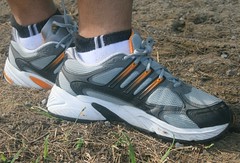OSMOREGULATION: REGULATION OF BLOOD WATER POTENTIAL
DECREASE IN BLOOD WATER POTENTIAL
DECREASE IN BLOOD WATER POTENTIAL
- Decrease may be due to loss of water through sweating when doing vigorous exercise or when the environmental temperature increases which causes more sweating (stimulus).
- This decrease stimulates the pituitary gland in the brain to secrete more Anti Diuretic Hormone (ADH) into the blood.
- The blood then transports this ADH to the kidneys (target organ).
- The function of ADH is to promote water reabsorption from the filtrate in the kidney tubules back into the blood capillaries which are in close contact with the kidney tubules.
- Since ADH is secreted in high concentration, more water will be reabsorbed back from the filtrate in the kidney tubules into the blood capillaries.
- As a result, urine production will decrease and hence urine becomes more concentrated.
- Reabsorption of water back into the blood capillaries, causes the water potential in the blood to increase (Negative Feedback) and eventually the level of water potential in the blood will return back to normal.
(Note: if this corrective mechanism is not functioning, red blood cells in the blood may undergo crenation and hence less oxygen will be transported)
INCREASE IN BLOOD WATER POTENTIAL
- Increase may be due to too much intake of water or lack of sweating (stimulus).
- This increase stimulates the pituitary gland in the brain to secrete less ADH into the blood.
- The blood then transports this ADH to the kidneys (target organ).
- The function of ADH is to promote water reabsorption from the filtrate in the kidney tubules back into the blood capillaries which are in close contact with the kidney tubules.
- Since ADH is secreted in low concentration, less water will be reabsorbed back from the filtrate in the kidney tubules into the blood capillaries.
- As a result, urine production will increase and hence urine becomes more dilute.
- Less reabsorption of water back into the blood capillaries, causes the water potential in the blood to decrease (Negative Feedback) and eventually the level of water potential in the blood will return back to normal.
